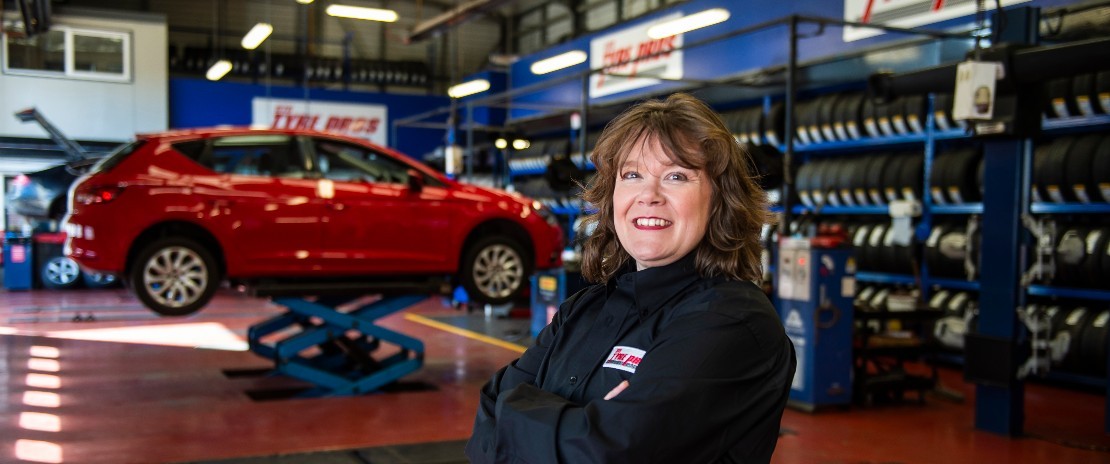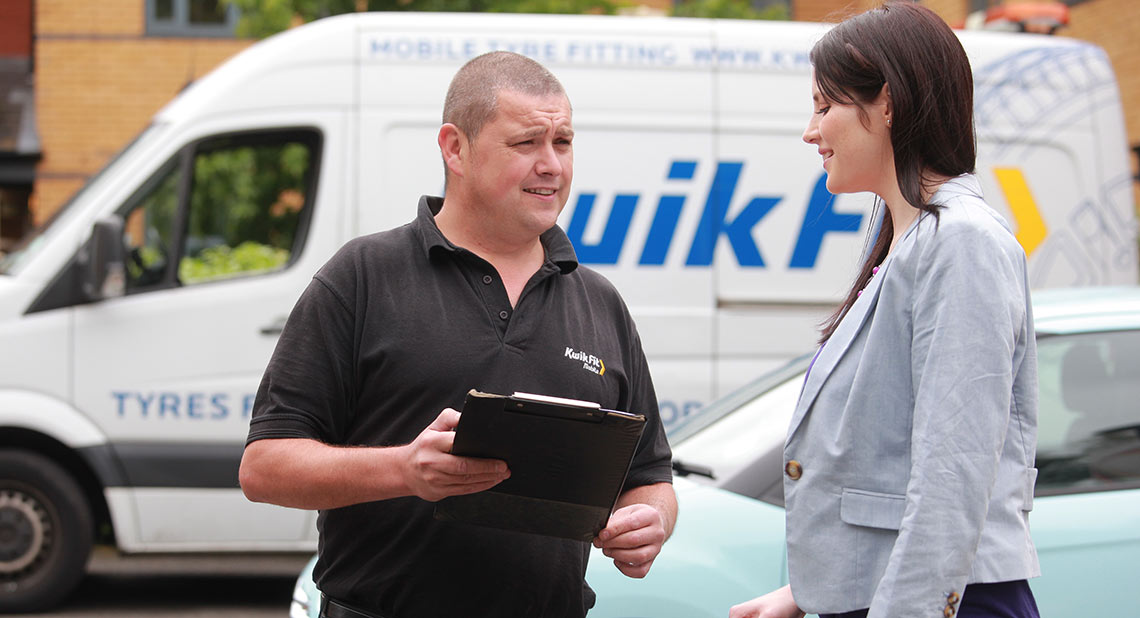Many drivers forget to check the condition of their tyres regularly, with some even waiting for their annual MOT for a diagnosis. Tyres are the only point of contact that your car has with the road, and they have to bear the entire weight of the vehicle and its occupants, so a year is a very long time in the life of your tyre.
If you are a Motability Scheme customer, your all-inclusive package includes replacement tyres if the tyres are worn or damaged through normal use. Puncture repairs, wheel balance and replacement of stolen or vandalised tyres are also covered at no extra cost; however it’s very important that all drivers carry out some checks regularly, to ensure that you are safe on the road.
We asked the tyre experts at Kwik Fit for their advice and they’ve provided us with a list of 3 essential steps to help maintain your tyres.
Tyre tread is vital to ensure that your car can grip the road properly, especially in wet conditions, making it one of the most important checks you can do. Specifically, tread depth refers to the measurement of the large deep grooves found in the central three quarters of the tyre tread.
Make sure all four tyres have at least 2mm of tread. The more tread you have, the better equipped your tyres are to brake in the shortest distance. But as tyres become worn, so too does their effectiveness to provide grip. That’s why it’s crucial to check the remaining tread depth on each tyre regularly.
How to measure your tread depth
There are a number of ways to measure your tyre tread depth. The first is a device called a tread depth gauge. This simple tool is designed to give a quick and accurate measurement of the depth of an individual tyre by dropping a pin into the tread groove and measuring how deep the pin falls.
If you don’t have one of these, another way to check is to use a 20 pence coin. ‘The 20p test’ is a quick and easy way of assessing if the tread depth of your tyres is a concern. Simply insert the coin into the grooves of the tyre and bring your eye level in line with the face of the tyre. If you can see the outer band of the coin, it’s likely the tread is worn to a point that the tyre needs to be replaced.
Tyre Pressure
Checking your tyre pressure regularly may seem like an inconvenience, but as well as keeping you and your passengers safe on the roads, it can also help you save money.
The obvious danger with having low pressure in your tyres is that the added strain on the rubber sidewall will cause the tyre to burst. But even if your tyres are only slightly underinflated, this can decrease fuel efficiency and they can wear out more quickly, meaning you’ll be paying more at the pump and will need to replace them more frequently.
But what is the correct tyre pressure?
Good question, and one you should find the answer to before you attempt to inflate your tyres as over-inflation can also cause steering issues and rapid tyre wear, so don’t over do it.
The easiest way to find out the recommended tyre pressure for your vehicle is to check your vehicle manufacturer’s manual. If you don’t have a manual, try looking in the well of the driver’s door as you will often find a sticker indicating the correct tyre pressure.
How to measure each tyre
Tyre pressure is measured in PSI (pounds per square inch). Once you know the recommended PSI for your front and rear tyres you can pay a visit to any good petrol station forecourt who will supply air for a small fee. Simply set the desired PSI on the machine, take off your tyre valve dust cap and apply the air hose. The machine will show you the current pressure and automatically inflate to the pressure entered. If you don’t want to make the journey to a garage forecourt each time, you can also pick up a digital tyre pressure reader to check your pressure at home.
Wear and tear and ageing
Every day your tyres take a pounding, whether it’s from potholes, curbing or debris left in the road. So it’s perfectly natural that they would suffer from some general wear and tear. However, you may not always be aware of the damage unless you go looking for it. Keep your tyres in good condition by getting into the habit of inspecting them regularly. Look at the surface of the tyre to inspect them for lumps, cuts, bulges and irregular tyre wear. Also, use your hand to feel for anything that might be embedded into the rubber, such as a screw or nail.
When checking your tyres, if you notice anything unusual or something you’re not sure about, don’t worry, get in touch with your local Kwik Fit centre and our team will be able to assist; we’re here to help.
With tyre replacement from Kwik Fit included as part of your lease agreement, we can get you back on the road as quickly and safely as possible.
Related articles:
Quick hints for making the most of your car on a budget
Winter tyres: What you need to know
Have you made any New Year’s Resolutions? Here’s what our Scheme partners are pledging this year
The Motability Scheme enables disabled people and their families to access a brand new car or scooter, by exchanging their mobility allowance to lease the vehicle of their choice. Find out more:
![]()






